My experience of autumn in Japan began before I arrived in Osaka late last month. I’d been reading Yukio Mishima’s Spring Snow, which begins amid a waterfall flanked by scarlet maple leaves, and a Buddhist myth about a man who drinks water from a human skull—the bright side of fall, and its shadow.
A footnote on page 30, where I picked up shortly after my flight landed, was both a summary of the previous 29, and a guide post of the hundreds yet to come: All existence is based on subjective awareness.
As the Kansai Airport Rapid Service lurched away from the airport, I quickly became aware that I’d chosen precisely the right week for my seasonal adventure. Although a near-majority of the trees that lined the railroad tracks looked as green as a freshly-frothed bowl of matcha, the colors of the Osaka autumn revealed themselves quickly and repeatedly, in pulses of red, orange and yellow that seemed sequenced as if to send a distress signal.
Not-So-Limited Express
My visit to Osaka was confounding, even before the not-so-limited express train breached the city limits. Though I only planned to be there exactly 24 hours, this would technically constitute my longest contiguous presence in the city—all my earlier visits had either been day trips, or had involved day trips from Osaka to other places in the Kansai region.
Just before mid-day I breached the walls of Osaka Castle for the third time in my life, surprised at how much more vibrant the golden ginkgo and ruby sakura leaves looked at moat-level than they had from the 10th floor of the Osaka Museum of History.
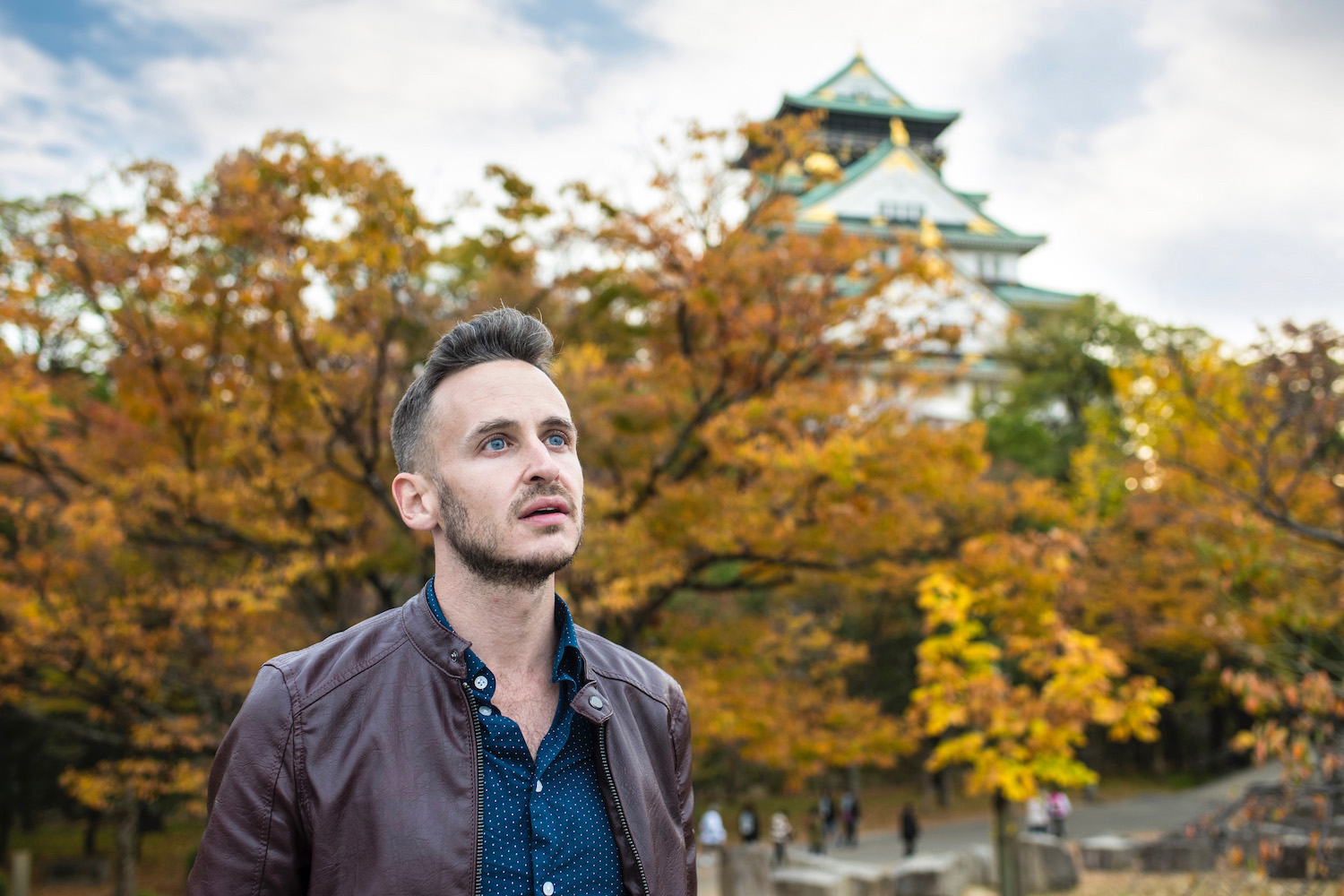
Hours earlier, as I’d looked down on the fortress from a view point that had evaded me during every prior sojourn to Japan’s second city, I meditated on another passage from Spring Snow, both to temper my astonishment about the richness of the Osaka’s past, and to prevent my trip from become a crusade avenging creative failures from my own.
History is a record of destruction. One must always make way for the next ephemeral crystal.
My day in Osaka was lovely. After dividing the afternoon between Shitenno-ji and Sumiyoshi Taisha, I returned to the Castle to watch sunset and strolled along Dotonbori Canal after night had fallen. But I felt relieved to leave it behind me the next morning.
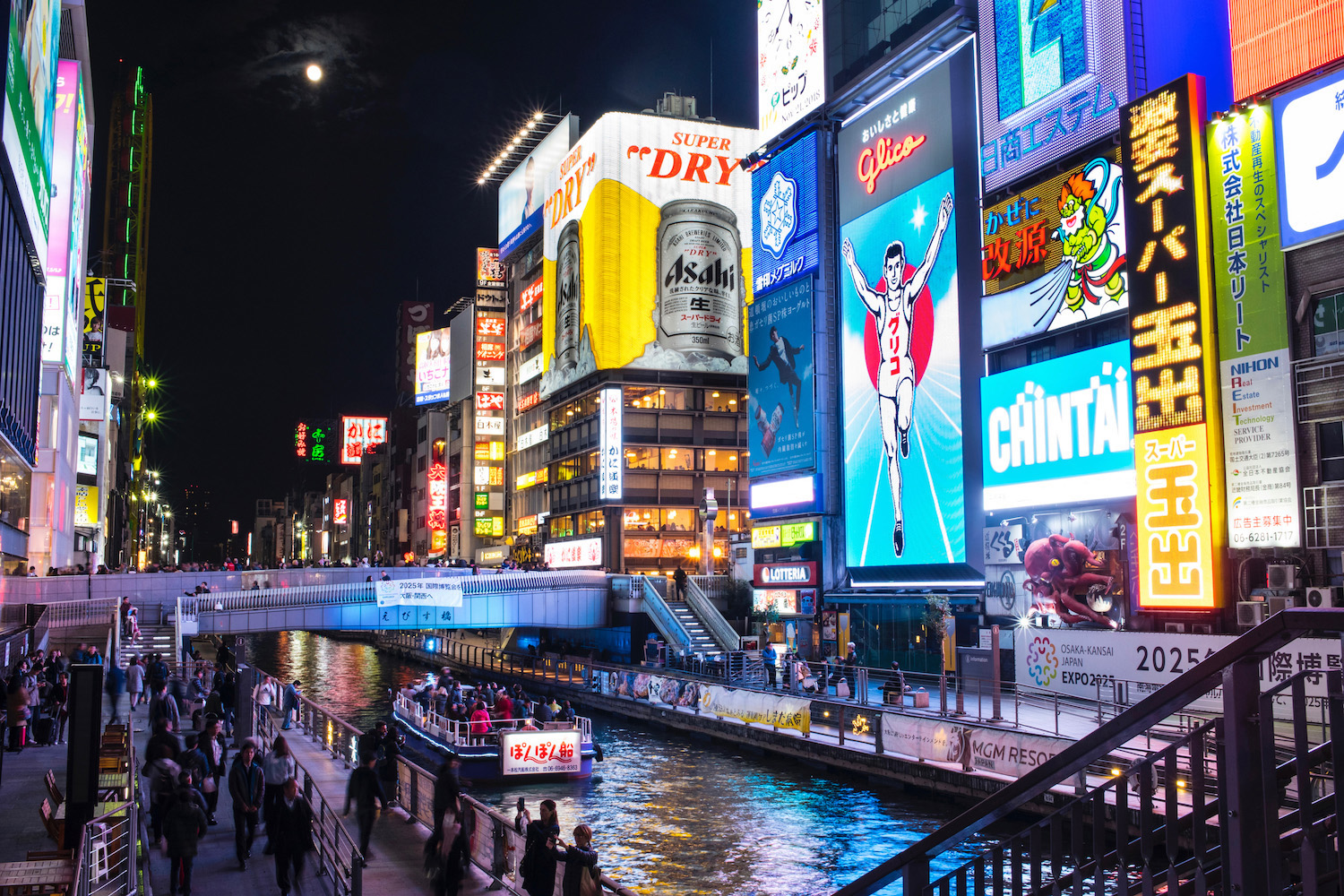
From the moment I first thought to take a trip such as this one, I’d known that autumn in Japan would never really exist in my mind’s eye until I experienced it in Kyoto.
Though I’d avoided thinking about it during the lead up to my trip, I consulted my phone’s “Weather” app as I sped toward Kyoto. It revealed, among other things, that my first day in Japan’s erstwhile imperial capital would be marred by silvery skies, which had already ruined a disproportionate number of my trips this year, from Okinawa to Mongolia and most places in-between.
Cobalt to Sapphire
Arriving at Kyoto Station, I did my best to release all the emotion and superstition with which this realization had impregnated me, not unlike how the rain-swollen clouds above began to wet the windows of Raku Bus #206. But like Spring Snow‘s imaginative protagonist Kiyoaki Matsugae, I have a tendency to design fortified castles and build myself deep within their walls.
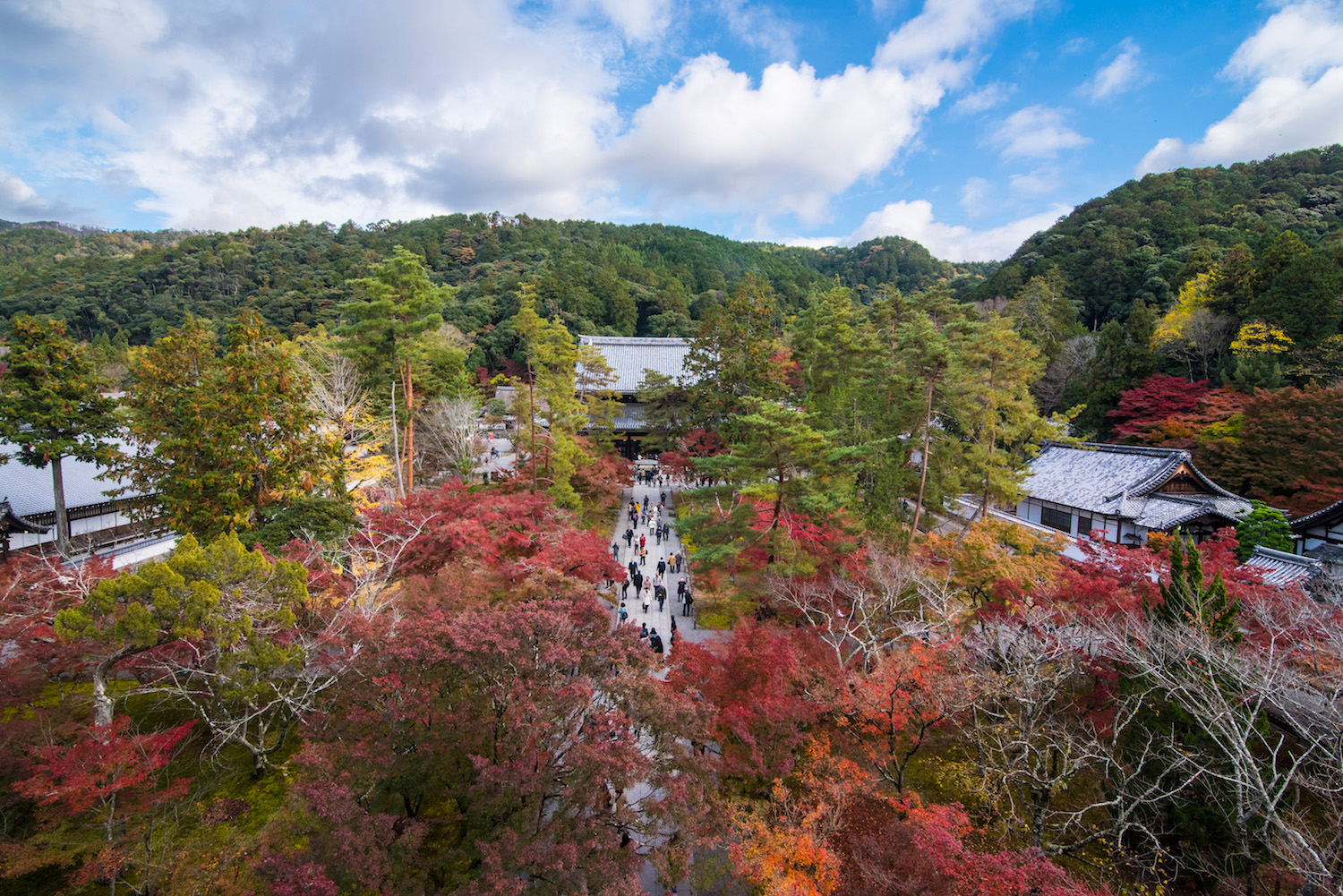
This proved a somewhat futile exercise, to be sure, not unlike Kiyoaki’s years of trying to dissolve thoughts of his childhood playmate turned princess-in-waiting Satoko Ayakura. The older they got, the more obvious it became to him that the collision course they were on would not bring about unison, but mutual destruction.
Initially, I felt so mesmerized by the Kyoto autumn leaves arching over the walkway at Kinkaku-ji that I ignored the pallor the day’s dull light had brought out in them. But I soon began to recall the first time the Golden Pavilion had glistened before me—I dwelled on it.
On a random day in January 2015, I’d come to Kyoto for what was then my second visit, completely on a whim. The clouds that afternoon were like aerosol whipped cream puffed into a chromatic sea of blues, which traversed the short spectrum from cobalt to sapphire as elegantly as the temple’s 1955 re-construction had salvaged the memory of the 14th-century original from the ashes of arson.
If a candle has burned brilliantly but now stands along in the dark with its flame extinguished, it need no longer fear that its substance will dissolve into hot wax.
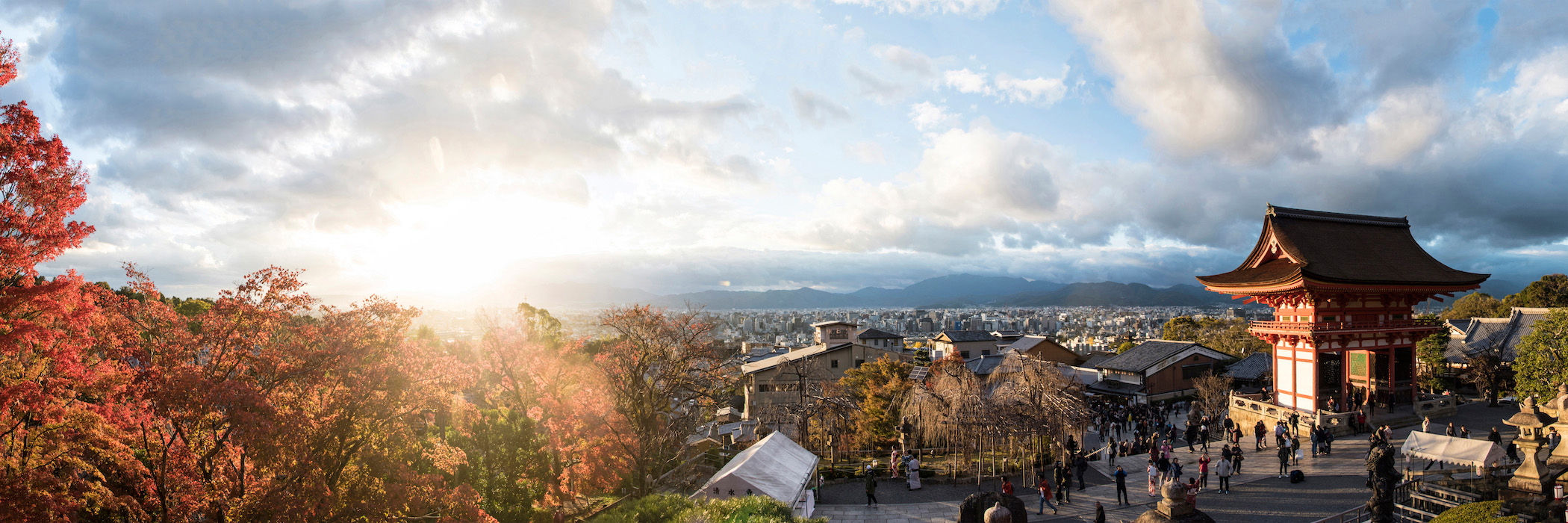
The sky, for its part, became clearer and bluer as the day wore on, and I walked from the Silver Pavilion of Kinkaku-ji down the Philospher’s Path to Nanzen-ji and finally up the slopes of Shimizuyama toward Kiyomizu-dera, the only place in Kyoto where the setting sun means anything. During my run the next morning, the continued lack of clouds cooled the air to several degrees below where it should’ve been, considering that most trees still had all their leaves.
Earth Circa 2014
Nonetheless, as my third day of autumn in Japan dawned, I felt optimistic in spite of the pessimism that had clouded the second, not because the sun’s very rays had disproven its supposed impenetrability.
It was likewise a matter of happenstance that my Arashiyama autumn would proceed almost identically to how spring in the district five Aprils prior had gone. Naturally a pair of pinks, delicate and shocking, had been painted onto the landscape, in the form of cherry and azalea blossoms, rather than the warm array of withering leaves that now dominated the scene.
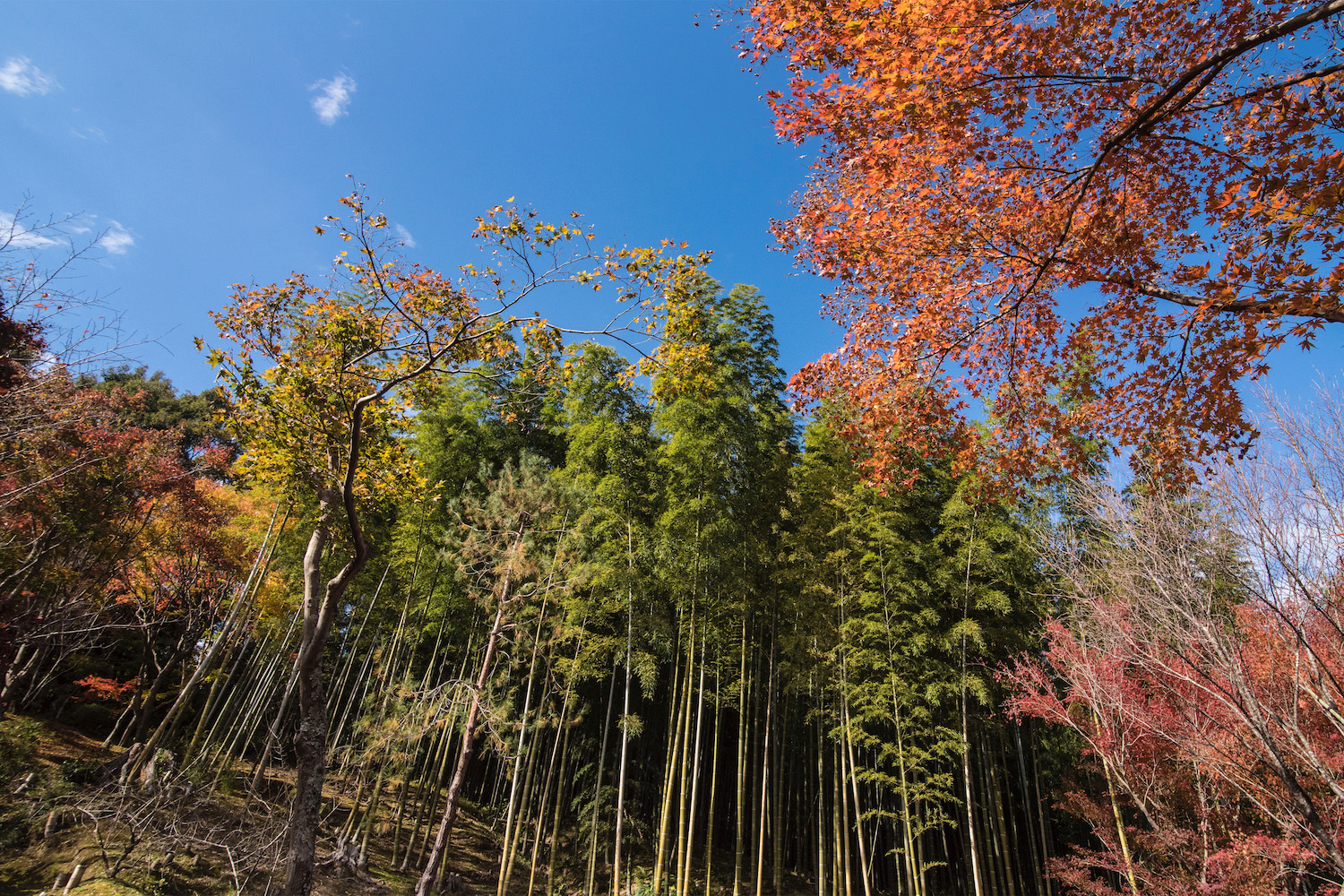
But each of these seasonal rainbows seemed to contrast perfectly with the chartreuse of Sagano Bamboo Grove, whose stalks towered in the distance. Sunshine had blessed both of these days, and it was of precisely the same brightness, even though nearly half a decade passed between them.
I looked out onto Kyoto from the observation deck of Okochi Sanso Villa, whose relatively desertion as compared to the other landmarks of Arashiyama was worth every sen of the ¥1,000 I paid to enter its grounds. And I thought about that April morning deeply, beyond the fact that it was one of the first I had ever spent in Japan.

How profoundly the world had changed since then! Planet Earth circa 2014, compared to the place we find ourselves living in autumn 2018, is not unlike the transformation Japanese society was going through around 1912, when commoner Kiyoaki’s pursuit of aristocratic Satoko foreshadowed how futile the Meiji Restoration would be when all was said and done.
He kept pouring sand from one palm to the other. When he had spilled a good part of it in the process, he reached down automatically and began with a fresh handful, his thoughts completely taken up with the sea.
A Single Consciousness
About a year ago, I came upon an article with a shocking hypothesis: Humans’ perception of time as a continuous stream, rather than an accumulation of moments like sand in an hourglass, was based on a fundamental error in the our perception of the world outside ourselves.
At the time, I was still desperately struggling with the idea that my country of birth would never again be my home. The mere possibility that the logical foundation upon which I built this fatalism might not be so solid was comforting, even if I lacked the scientific background to vet the research.
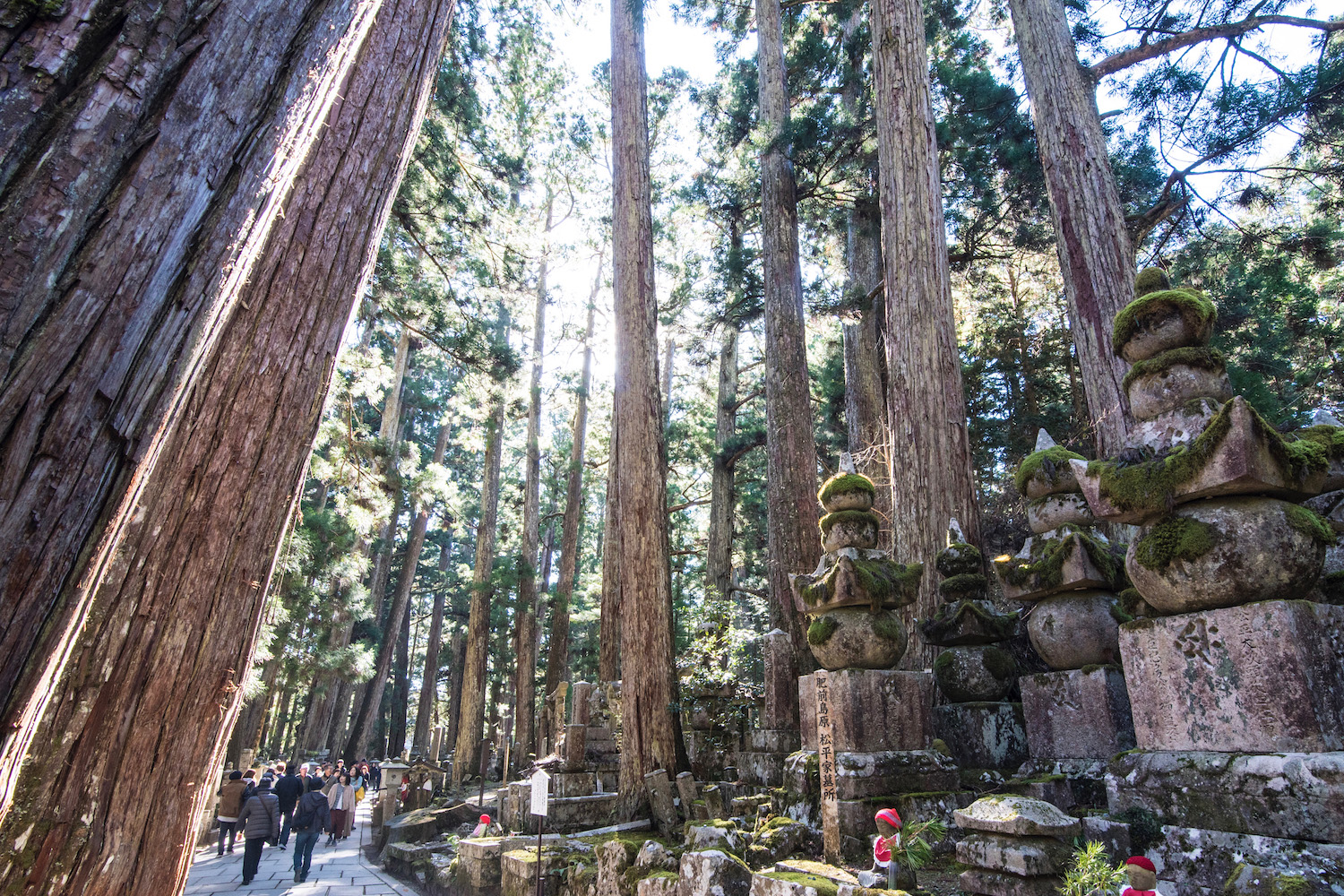
This was one of many threads weaving through my head as I made my way to the summit of Mt. Koya on my fourth day in Japan in autumn. Somewhat ironically, the sky that day was the clearest and bluest it had been since my touchdown in Osaka. It was not lost on me that by heading to Koyasan Cemetery, a place whose few deciduous trees were already barren of leaves, I was forfeiting what might be my best opportunity so far to document fall in Kansai.
Not wanting to be distracted by my resurgent despair, I cracked open Spring Snow, wherein Kiyoaki and his longtime companion Honda were conversing on a beach in Kamakura. They’d retreated there (More accurately Kiyoaki had gone, and Honda followed him like faithful puppy he is) to escape a painful truth: That Satoko’s recent engagement to a Imperial prince was a direct result of Kiyoaki’s emotional volatility.
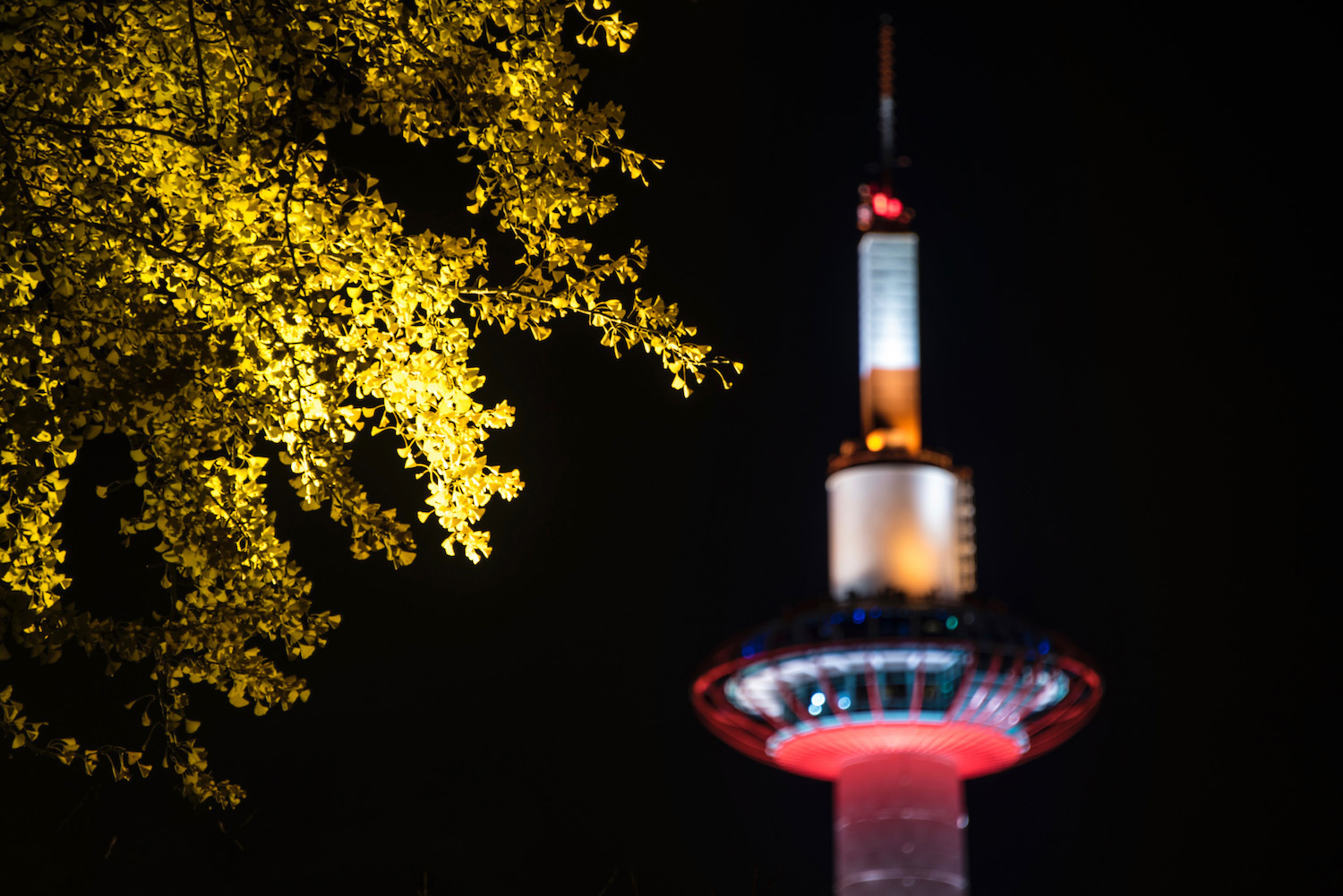
In his own despair, Kiyoaki suspends his usual disinterest in anything Honda has to say and listens to his friend’s thoughts on reincarnation.
Something has to be passed on in transmigration, but I don’t see how we can take any number of separate and distinct existences, each with its own self-awareness, and racket them together as one, claiming that a single consciousness unites them.
As I looked upon the illuminated Kyoto Tower, perfectly framed by gingko against the black sky, I tried to reconcile this observation, which was esoteric if not wholly fictive, with a conclusion that at least appeared to be scientific. How could each of us fuse together individual moments within one life, but fail to connect the various lives we lived throughout eternity? Why did I look back upon my previous trips to Japan as if they were part of a different journey than the one I’m now on?
Dying of a Season
The next task on my list of things I hoped to accomplish visiting Japan in autumn was a half-day trip to the castles of Nagahama and Hikone, which sit on the northeastern shore of Lake Biwa in Shiga prefecture.
I’d originally planned to set off around 8 am, which is when all my previous day’s excursions had begun. Yet upon seeing how clear the sky was at 6:30 when I headed to Lawson to buy my breakfast of Red Bull Sugarfree and chocolate-filled Melonpan, I decided to make a mad dash for the train departing from Kyoto Station to Maibara at 6:33, and made it by seconds.
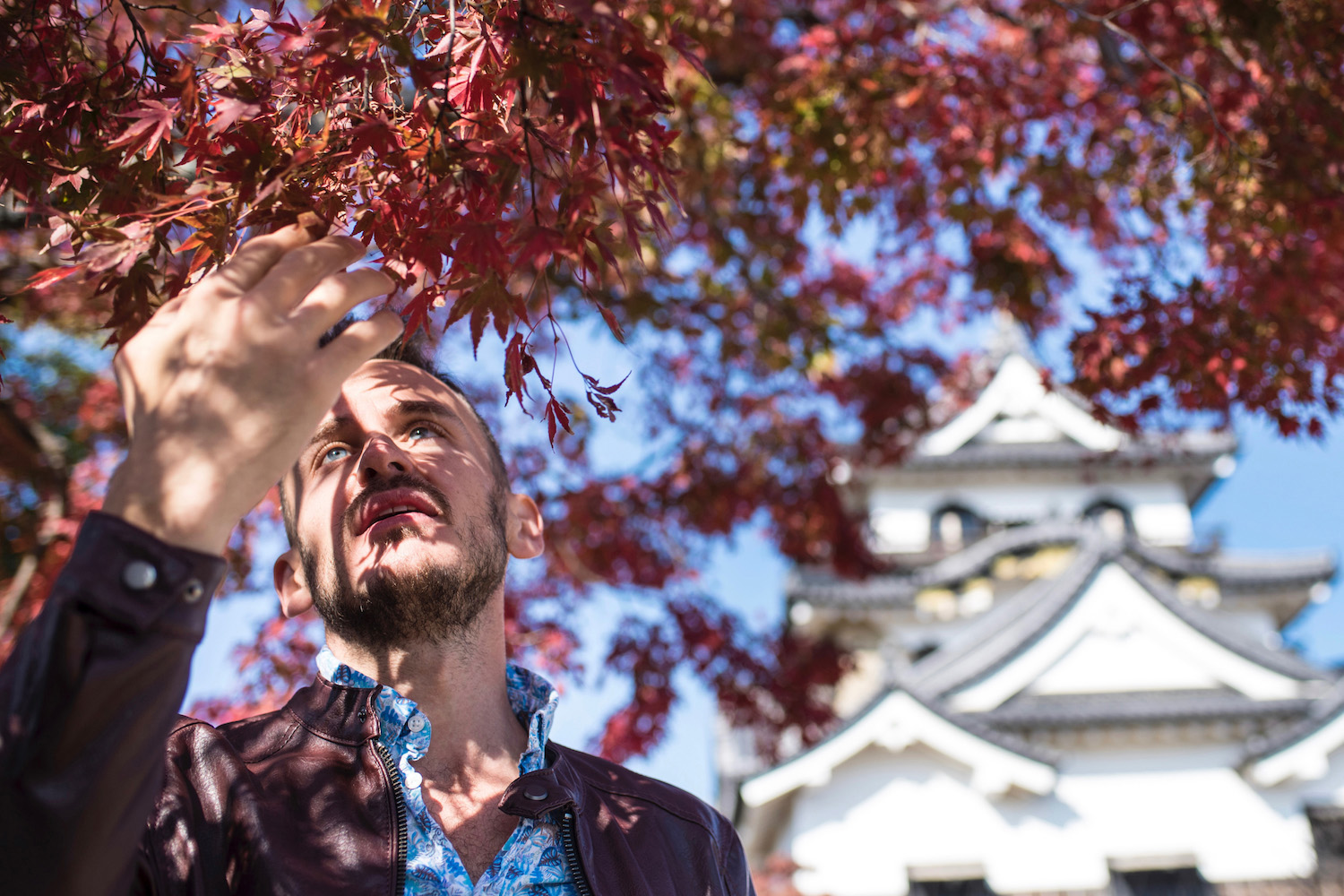
It was approximately the same number of seconds the passed between my arrival at Nagahama Castle, whose current structure, like Kinkaku-ji’s, dates back only to the 20th century, and a thick whiteness sweeping over the earth like a blanket. It was the same way Kiyoaki described feeling as his summer on the coast of Kamakura came to an end.
And so in place of the wild joy that had flowed from his sense of resolution at that time, he now felt the sadness of a man who watches the dying of a season.
Much like Kiyoaki’s joy, my annoyance had been fleeting. By the time I ascended to the keep of Hikone Castle, which unlike Nagahama’s is original, the light that flitted through its impressive collection of Japanese maple trees was entirely unfiltered by clouds. When I arrived in Genkyu-en garden, which sits just beneath the castle, it was downright oppressive in its brightness.
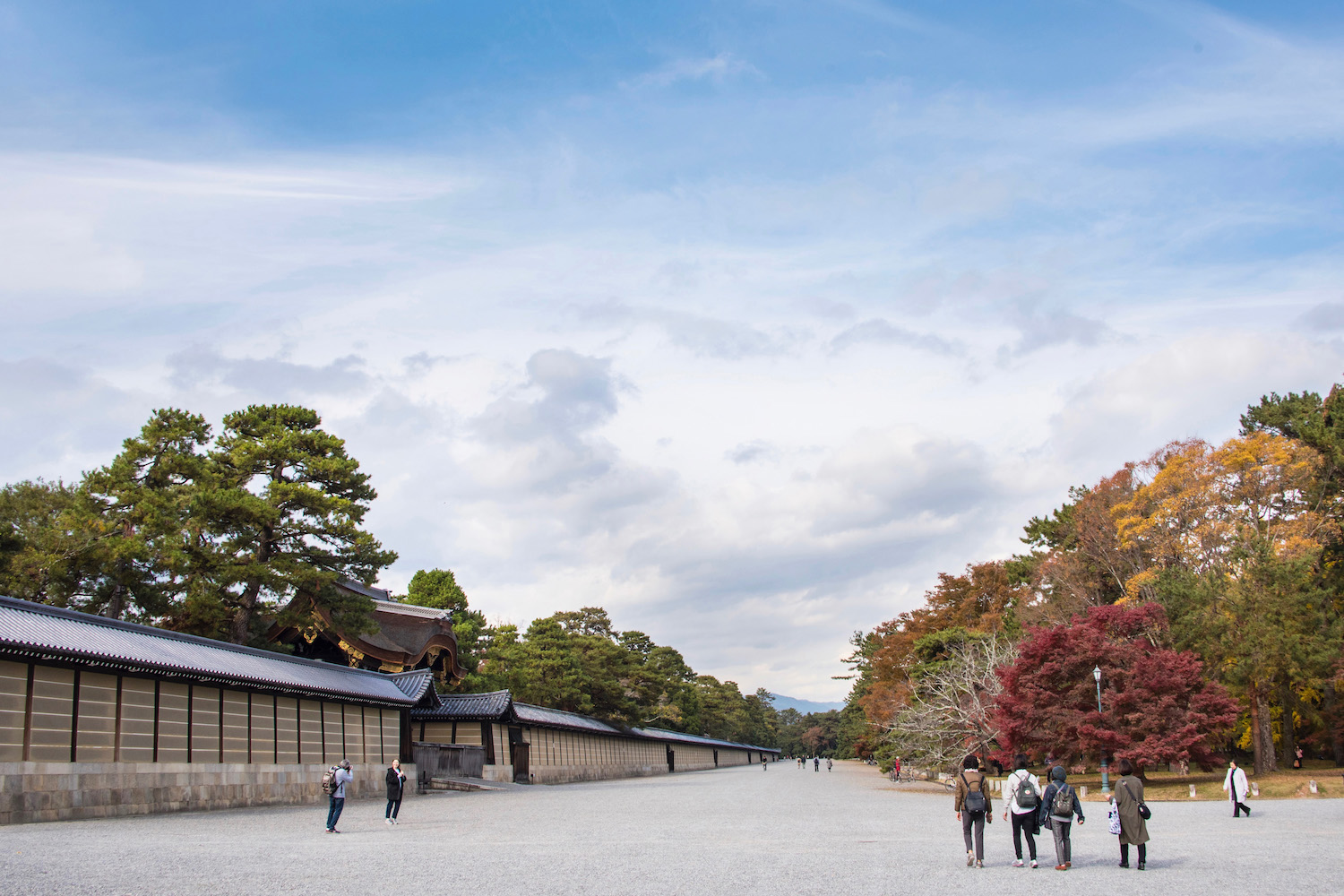
Which is not to say I had embellished the hideousness of my Nagahama morning. As a friend in Kobe had written to me in a Facebook message, the Kansai region was prematurely falling victim to what she called “winter skies,” in spite of autumn colors being at their peak, and daytime temperatures remaining mild as December drew near.
Nature was simply sending mixed messages as the season from which I’m narrative began to die. As the afternoon wound down, I photographed a trio of Kyoto gardens—Shosei-in near the Tower, as well as private areas of Kyoto Imperial Palace and Heian Shrine—under the same unflattering light that had followed sunrise. But then, the sunset I watched from Ryozen Gokoku Jinja was the most vibrant I’d ever seen in Japan.
The Grace I Believe
He believed that only a vulgar mentality was willing to acknowledge the possibility of catastrophe.
As I awoke the last day I would experience autumn in Japan this year, I felt as resolved as Satoko’s father Count Ayakura did when he discovered his daughter had fled to a Buddhist nunnery in order to escape marriage. The beauty of my present experience, whether it was in fact a continuous stream of fortuitousness, or as a clump of auspices gathered together tightly enough to block such a stream, would merge with my romanticizations of the past. I just knew it.
After making a brief stop in Uji to pay a visit to the city’s 13-tiered pagoda (which was smaller than I expected it to be), I realized my Nara-bound train was passing through Sakurai, where Satoko’s fictional nunnery was said to have been located.
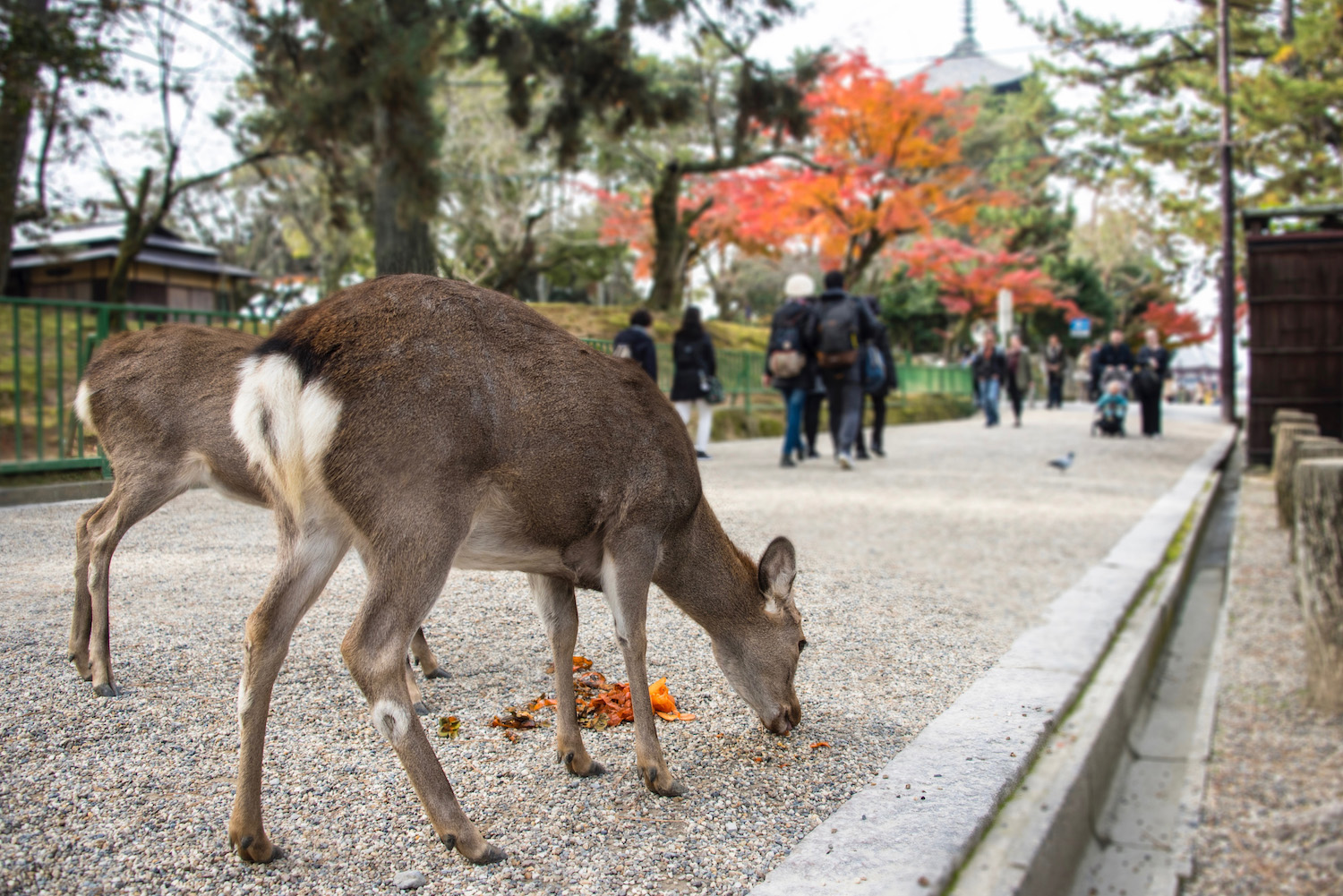
Kiyoaki, ill with what is later revealed to be pneumonia, travels to Gesshu Temple to try and steal Satoko away, unaware that when she disavowed her engagement to the Prince, she also promised she would never meet Kiyoaki again. He becomes sicker and sicker each time the Abbess denies his requests, to the point where Honda needs to come and advocate on his behalf.
Yet I couldn’t have been farther from this misfortune, frolicking with deer under the crimson canopy of Nara Park. Tasting tempura-fried maple leaves of viral internet fame along the path to Minoh Falls, which sits about an hour north of Osaka, and whose own scarlet-maple frame evokes the grace I believe will come to define my trip in retrospect, and calls back to the scene that welcomed me into the world of Spring Snow.
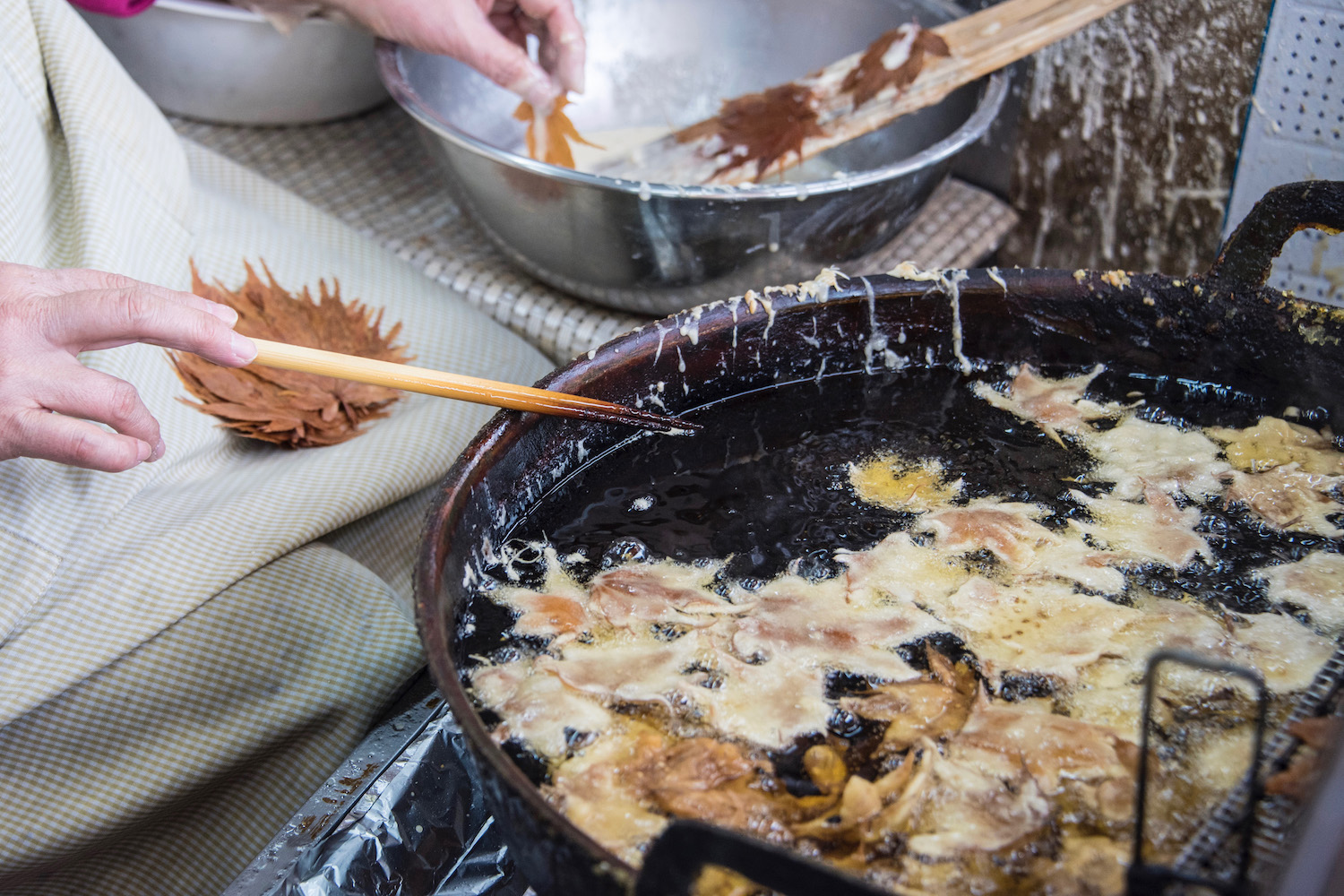
Arriving at the landing of the falls, I immediately climbed down into the mysteriously dry riverbed, hoping to evade both the oppressive crowds and yet another tripod ban. An angry shopkeeper, who was so old I imagine she was alive at Mishima’s great novel took place, yelled down on me to indicate the rules of the land still applied at water level.
I took my sweet time getting the camera stand packed up (and, in the meantime, threw some English-language shade back at my harasser) and recalled a detail I’d glossed over in previous recollections: Kiyoaki and Honda, upon noticing that the waterfall with the scarlet maple leaves was flowing more slowly than usual, had discovered the corpse of a black dog lodged at the top of it.
A Cask of Death
I, of course, had neither the time nor the inclination to see why Minoh Falls’ trickle wasn’t a roar, nor to determine how it was that I was standing on dry land, rather than walking on water. Given the size of this particular waterfall, an awfully large creature would’ve had to die if its corpse was responsible for the blockage.
However, as I headed back toward Minoh Station, from which I would return to Osaka and then to Kyoto, and then to Bangkok where I write this today, I did think about the hopeless ending of Spring Snow. Kiyoaki succumbed to his illness without getting to lay eyes upon Satoko even once more, an injustice that also spoke to Satoko’s own tragedy: She forfeited happiness in order to comply with social mores that were on the verge of obsolescence anyway.
I thought back to the parable of drinking the water from the skull, and how it was the perfect metaphor for the purpose my latest trip to Japan in autumn had served, in the end. How sometimes, perhaps more often than we’d like to think, our very life force floats in a cask of death.







